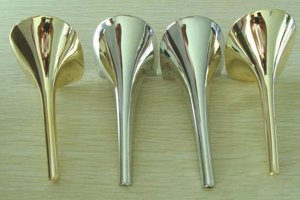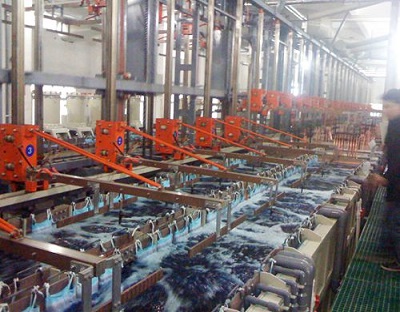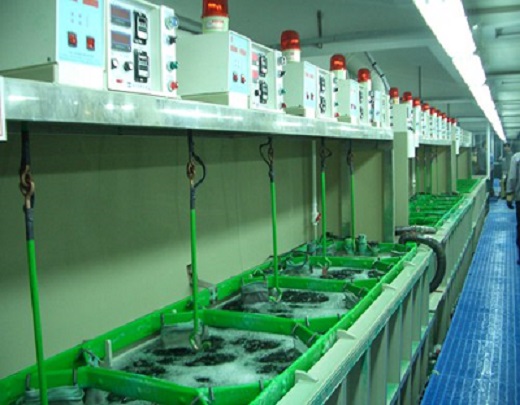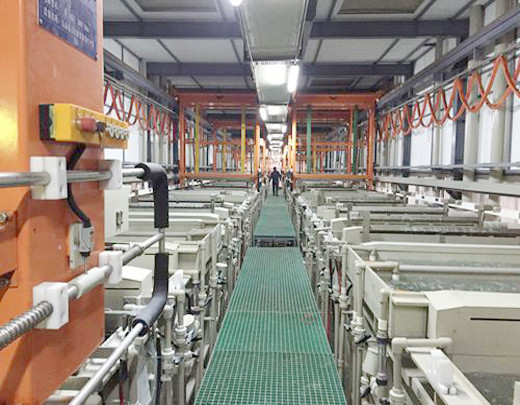Comparison of electroless plating and electroplating processes:
1. The principle difference between electroless plating and electroplating is that electroplating requires additional current and anode, while electroless plating depends on the autocatalytic reaction on the metal surface.
2. The electroless nickel plating layer is extremely uniform. As long as the plating solution can be soaked and the solute exchange is sufficient, the coating will be very uniform and can almost achieve the effect of profiling.
3. Electroplating cannot be applied to the whole surface of some workpieces with complex shapes, but electroless plating has been used to apply plating to workpieces with any shape. The electroless nickel coating with high phosphorus is amorphous, and there is no crystal gap on the coating surface, while the electrodeposited coating is a typical crystalline coating.
4. Because of the external current, the plating speed is much faster than electroless plating, and the plating of the same thickness is completed in advance than electroless plating.
5. The adhesion of electroless coating is generally higher than that of electroplating coating.
6. Electroless plating is more environmentally friendly than electroplating because most of them use food grade additives and do not use harmful substances such as cyanide.
7. At present, electroless plating has only one color of pure nickel phosphorus alloy in the market, and electroplating can achieve many colors.
8. Electroless nickel plating technology is a method to obtain the coating by autocatalytic reaction on the material surface with metal salt and reducing agent. So far, electroless nickel plating is one of the fastest developing surface treatment processes abroad, and its application range is also the widest. The rapid development of electroless nickel plating is determined by its superior process characteristics.

Process characteristics of electroless nickel plating:
1. Thickness uniformity. Uniform thickness and good uniform plating ability are a major feature of electroless nickel plating and one of the reasons for its wide application. Electroless nickel plating avoids the uneven thickness of electrodeposited coating caused by uneven current distribution. The thickness of electrodeposited coating varies greatly in the whole part, especially in parts with complex shape. The coating is thicker at the corners of parts and near the anode, The coating on the inner surface or far away from the anode is very thin, or even can not be plated. Electroless plating can avoid this deficiency. During electroless plating, as long as the part surface is in contact with the plating solution, the components consumed in the plating solution can be supplemented in time, and the plating thickness of any part is basically the same, even for grooves, gaps and blind holes.
2. There is no problem of hydrogen embrittlement. Electroplating uses the power supply to convert nickel cations into metal nickel and deposit it on the anode. The chemical reduction method is to reduce nickel cations into metal nickel and deposit it on the surface of the base metal. The test shows that the inclusion of hydrogen in the coating has nothing to do with the chemical reduction reaction, but has a great relationship with the electroplating conditions. Generally, the hydrogen content in the coating increases with the increase of current density.
In the nickel plating solution, except that a small part of hydrogen is produced by the reaction of NiSO4 and h2po3, most hydrogen is produced by the hydrolysis caused by the electrode reaction when the two poles are energized. In the anode reaction, with the production of a large amount of hydrogen, the hydrogen on the cathode precipitates at the same time with the metal Ni-P alloy to form (Ni-P) h, which is attached to the deposition layer, Due to the formation of an excessive amount of atomic hydrogen on the cathode surface, part of it desorbs to generate H2, and those who have no time to desorb remain in the coating. Part of the hydrogen left in the coating diffuses into the base metal, while the other part of the hydrogen accumulates at the defects of the base metal and the coating to form a hydrogen mass. The air mass has high pressure. Under the action of pressure, the defects cause cracks. Under the action of stress, The formation of fracture source leads to hydrogen embrittlement fracture. Hydrogen not only penetrates into the base metal, but also into the coating. It is reported that nickel plating should be at 400 ℃ × 18h or 230 ℃ × The hydrogen in the coating can be basically removed after 48 hours of heat treatment, so it is very difficult to remove hydrogen from nickel plating, while electroless nickel plating does not need hydrogen removal.
3. The functions of many materials and parts, such as corrosion resistance and high-temperature oxidation resistance, are reflected by the surface layers of materials and parts. In general, some electroless nickel coatings with special functions can be used to replace the overall solid materials prepared by other methods, or cheap matrix materials can be used to replace the parts made of valuable raw materials. Therefore, The economic benefit of electroless nickel plating is very great.
4. It can be deposited on the surface of various materials, such as steel, nickel base alloy, zinc base alloy, glass, ceramics, plastics, semiconductors and other materials, thus creating conditions for improving the properties of these materials.
5. It does not need DC motor or control equipment required for general electroplating, and the heat treatment temperature is low. As long as it is below 400 ℃ and after different holding time, it can obtain different corrosion resistance and wear resistance. Therefore, it does not have the problem of heat treatment deformation. It is especially suitable for processing some parts with complex shape and wear-resistant and corrosion-resistant surface requirements.
6. The chemical deposition layer has controllable thickness, simple process, convenient operation, low temperature and lower cost than other surface treatment and protection. It is suitable for small and medium-sized factories or small batch production.








 Dec. 20, 2019
Dec. 20, 2019 



